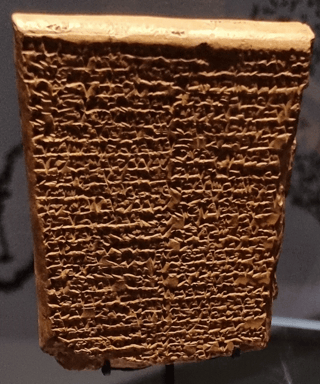Recently, in a museum, I saw a tablet of ancient literature from Mesopotamia, specifically showing part of the ancient Sumerian story Enki and Ninhursag:
The translation to English (provided in the museum and also available in the Electronic Text Corpus of Sumerian Literature) is as follows:
"May the land of Tukriš hand over to you gold from Ḫarali, lapis lazuli and ……. May the land of Meluḫa load precious desirable cornelian, meš wood of Magan and the best abba wood into large ships for you. May the land of Marḫaši yield you precious stones, topazes. May the land of Magan offer you strong, powerful copper, dolerite, u stone and šumin stone. May the Sea-land offer you its own ebony wood, …… of a king. May the 'Tent'-lands offer you fine multicoloured wools. May the land of Elam hand over to you choice wools, its tribute. May the manor of Urim, the royal throne dais, the city ……, load up into large ships for you sesame, august raiment, and fine cloth. May the wide sea yield you its wealth."
Some of these places are identifiable from a quick search: Marhasi and Elam were in modern-day Iran, Magan was in the modern-day Oman and UAE, and Meluha was (probably) in modern-day India. All of these are shown in the following map that I found on Wikipedia:
Tukris is a mystery, and Harali is probably not this? Does Urim refer to Ur or something else? Is it at all possible to identify what regions were referred to by "the Sea-land" and "the Tent-lands" in this passage?

